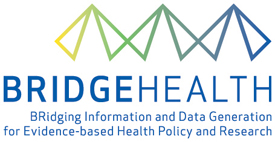Integrate health information systems
Integrate approaches into a comprehensive EU information system for health and health care monitoring and reporting.
The aim is to develop a coherent methodology to integrate health information systems from existing data sources, covering both population- and disease-based data from administrative, survey and registry sources. The work will be done in three steps. Firstly, by making use of available databases, the project will update and further develop the EuroHOPE research infrastructure with the aim of evaluating the performance of health care systems in terms of outcomes, quality, use of resources, and cost. This includes maintaining and updating the protocols of selected diseases/conditions (acute myocardial infarction, stroke, hip fracture). The protocols include e.g. inclusion/exclusion criteria, definition of cycle of care (when it starts, follow-up etc.), comorbidities (used in risk adjustment), and specification of process, utilization, cost and outcome measures. National, regional and hospital level indicators will be calculated from Finland, Denmark, Hungary, Italy, Norway and Sweden. The episode-based approach will be extended to include primary health care and social services in a pilot study using data from Copenhagen, Helsinki, Madrid, Oslo and Stockholm.
Secondly, the project will compare the feasibility and quality of performance information calculated from administrative data sets (with and without the possibility for register linkages). It will also assess legal issues (e.g. privacy, data transfer, statistical methods) related to the approaches with respect to the feasibility and quality of performance information.
Finally, the project will explore and test the building of a data linkage infrastructure capable of securely and safely managing health information from around the EU, overcoming the fragmentation of health information and data and contributing towards a sustainable and integrated EU health information system for both public health and research purposes.
The main contributers to this research field are:
 |

